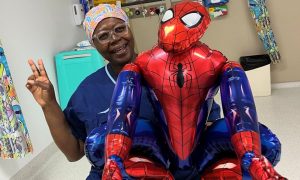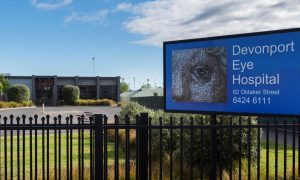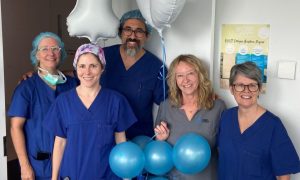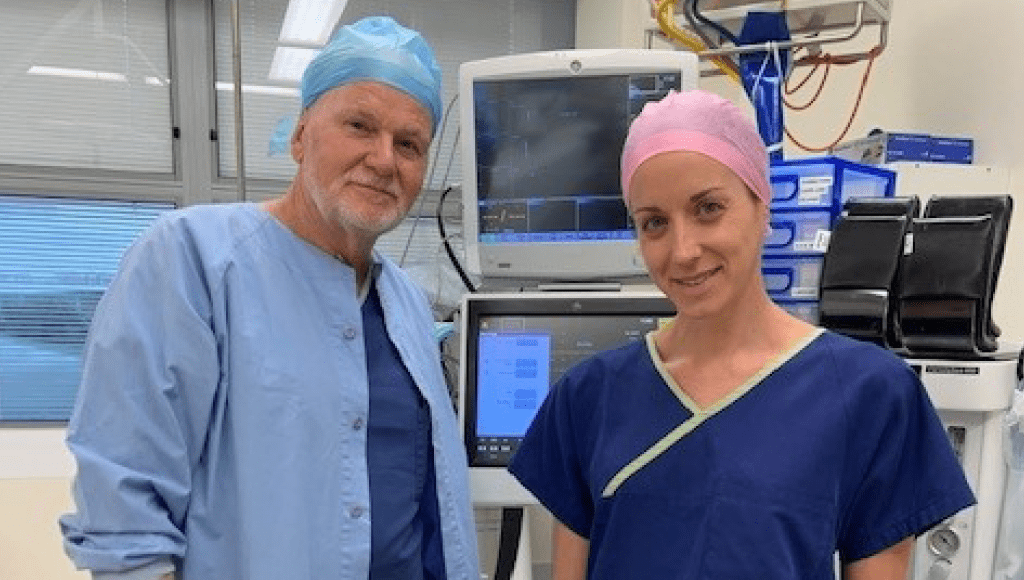Cura Group navigation
Hospital information
General information
Our procedures
Use the expand and collapse feature below to find more information, and patient information videos about the procedure you are undergoing.
Functional endoscopic sinus surgery (FESS) is a surgical treatment for some diseases of the nose and paranasal sinuses. It is usually undertaken as surgical treatment for sinusitis and nasal polyposis, including fungal sinusitis.
Rhinoplasty is a surgical procedure which improves the appearance or function of the nose by reshaping the nasal bone and cartilage. It is performed by either an Otolaryngologist – head and neck surgeon, Maxillofacial surgeon, or Plastic surgeon.
A blepharoplasty is a procedure which removes excess or sagging skin from upper and/or lower eyelids. The surgery is usually performed for cosmetic reasons however; it can improve sight in patients whose eyelids are obscuring their vision.
A canthoplasty is a surgical procedure that tightens the area around the eye in order to correct a drooping appearance, and create an upward slant in the outer corner of the eye.
A chalazion is a lump on the eyelid that is usually caused by obstruction of the drainage duct of an oil gland within the upper or lower eyelid. Surgical removal of chalazion may become necessary if vision becomes obscured, or an astigmatism.
A Dacryocystorhinostomy (DCR) is an operation performed to unblock the nasolacrimal duct (tear duct).
Ectropion is a medical condition where the eyelid folds outward. Corrective surgery involves the removal of a small piece of the fold to tighten the muscles in the area.
Entropion is a medical condition where the eyelid folds inward. Corrective surgery involves the removal of a small piece of the fold to tighten the muscles in the area.
Excision of lesions is a procedure to remove growths such as lesions, moles and tumours from the skin, sometimes accompanied by frozen sections and followed by sutures or a graft. The most common reason for undertaking this procedure is for the removal of skin cancers such as Basal Cell Carcinoma which is the most common skin cancer on the face.
Ptosis is a drooping of the upper eyelid. Corrective surgery is performed by tightening the levator muscle through an incision in the normal crease in the upper lid.
Cataract surgery is the surgical replacement of a cloudy lens with an artificial intraocular lens (IOL) implant to restore vision. The cloudy lens is broken up and removed with an ultrasound probe through a very small incision in the eye, and the artificial lens is inserted.
Intravitreal injections are used in the treatment of Age-Related Macular Degeneration. The Injections work by inhibiting the growth of abnormal blood vessels at the macula, and help to prevent leakage of these blood vessels.
Pneumatic Retinopexy is a procedure in which retinal detachment is treated through the injection of a gas bubble.
A pterygium is a growth of blood vessels and fibrous tissues covering the surface of the eye due to over-exposure to sunlight over an extended period of time. A pterygium is treated with a surgical excision and an auto-conjunctival graft.
A refractive lensectomy or refractive lens exchange, replaces the natural lens with an artificial intraocular lens (IOL) implant. The surgery is usually performed to reduce a patient’s dependence on glasses or contact lenses.
A scleral buckle is when a silicone band is placed on the outer wall of the eye to close a retinal tear. Injections of gas or cryotherapy (intense cold) are also used to assist the buckle in closing the retinal tear.
Squint surgery involves tightening the extraocular eye muscles to change the eye position in order to correct a turned eye.
Glaucoma is characterised by elevated intraocular pressure associated with optic cupping and visual field loss. Trabeculectomy surgery lowers intraocular pressure by forming a new drainage to allow fluid to escape from the eye.
Vitrectomy is a surgery which removes the vitreous gel from the eye to assist in the repair of retinal detachments, macular holes and retinal membrane surgeries.
Dental implants are used to replace damaged or missing teeth. A dental implant procedure is where a screw or metal fixture is implanted into the jaw as the base for a new false tooth.
When wisdom teeth have the potential to cause problems or become impacted, they may be removed surgically. In the procedure, the surgeon makes a small incision and extracts the tooth with forceps.
A tooth extraction is the removal of a tooth from the dental alveolus (socket) in the alveolar bone.
The purpose of an ACJ excision procedure is to remove a damaged Acromioclavicular Joint (ACJ). The ACJ may have been damaged from injury or arthritis.
An arthroscopy is a procedure in which an endoscope is inserted in a joint through a small excision in order to diagnose and treat a number of conditions. An arthroscopy can be performed on a knee, shoulder, wrist or ankle.
Biceps reimplantation is the surgical treatment of bicep tendonitis of the shoulder. The surgeon cuts the tendon and reattachs it to the humerus bone therefore reducing pressure from the shoulder.
Endoscopic carpal tunnel release surgery is the use of an endoscope to cut the transverse carpal ligament. The endoscope is usually inserted through a small incision in the palm.
Carpal tunnel release is a surgery used to treat carpal tunnel syndrome. During the surgery, the surgeon will cut the carpal ligament to relieve pressure on the median nerve, and make more space for the nerve and tendons.
Dupuytren’s contracture is the development of a fibrous connection between the finger tendons and the skin of the palm resulting in a forward curvature or ‘clawing’ of one or more fingers. Treatment for Dupuytren’s contracture includes needling, injections and surgical procedures to sever the tissue causing the contracture.
Rotator cuff repair procedures are most commonly performed by arthroscopic surgery, however in some cases open shoulder surgery may be necessary. The procedure involves removing any loose fragments from the area, and then surgically repairing the tendon.
Synovectomy is the surgical removal of the inflamed synovium (the tissue lining the joint), and is usually performed with an arthroscopy. The surgery is usually performed in cases of inflammatory arthritis where there is swelling causing pain, or limiting the range of motion of the digits and thumb.
Trapeziectomy is the removal of the trapezium (cubed shaped bone in the wrist) due to pain (usually from osteoarthritis).
Trigger Finger, also known as stenosing tenosynovitis or flexor tendonitis, is a condition where one of the fingers or thumb of the hand is caught in a bent position. Surgery may be undertaken to release the tight portion of the flexor tendon sheath.
Spinal cord stimulation (SCS) and peripheral nerve stimulation (PNS) are two common examples of neuromodulation used for the treatment of pain and have been shown to be effective treatment options for many patients with refractory neuropathic pain.
Commonly referred to as a ‘tummy-tuck’, an abdominoplasty is a cosmetic or reconstructive surgery to remove excess skin and fat from the abdomen, and to tighten the stomach muscles.
Breast augmentation is the surgical increase of the size of woman’s breasts, usually through the use of breast implants.
A breast lift, or mastopexy, raises and firms the breasts by removing and tightening the surrounding skin.
Breast reduction surgery also known as reduction mammoplasty is a procedure to reduce the size of large breasts through the removal of excess fat, tissue and skin from the breasts.
The forehead lift or browlift is performed to correct sagging eyebrows or improve the lines of a person’s forehead.
Facelift, also known as meloplasty or rhytidectomy, involves surgical procedures that tightens and removes drooping skin.
Gynaecomastia surgery aims to remove the excess breast tissue, fat and skin from the male chest. Surgery usually consists of a combination of liposuction followed by glandular excision.
Labiaplasty surgery is a procedure which reduces and reshapes excess labia minora tissue of the vagina.
Otoplasty, also known as ear correction surgery or ‘ear pinning’, is performed to move prominent or protruding ears closer to the head. It is done using permanent sutures to hold the ears in place.
Rhinoplasty is a surgical procedure which improves the appearance or function of the nose by reshaping the nasal bone and cartilage. It is performed by either an Otolaryngologist – head and neck surgeon, Maxillofacial surgeon, or Plastic surgeon.
- Follow Kawana Private Hospital on social





